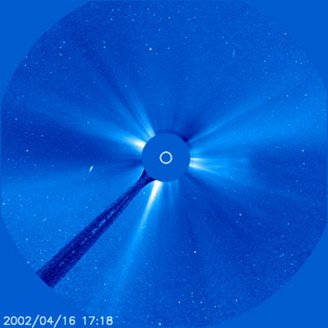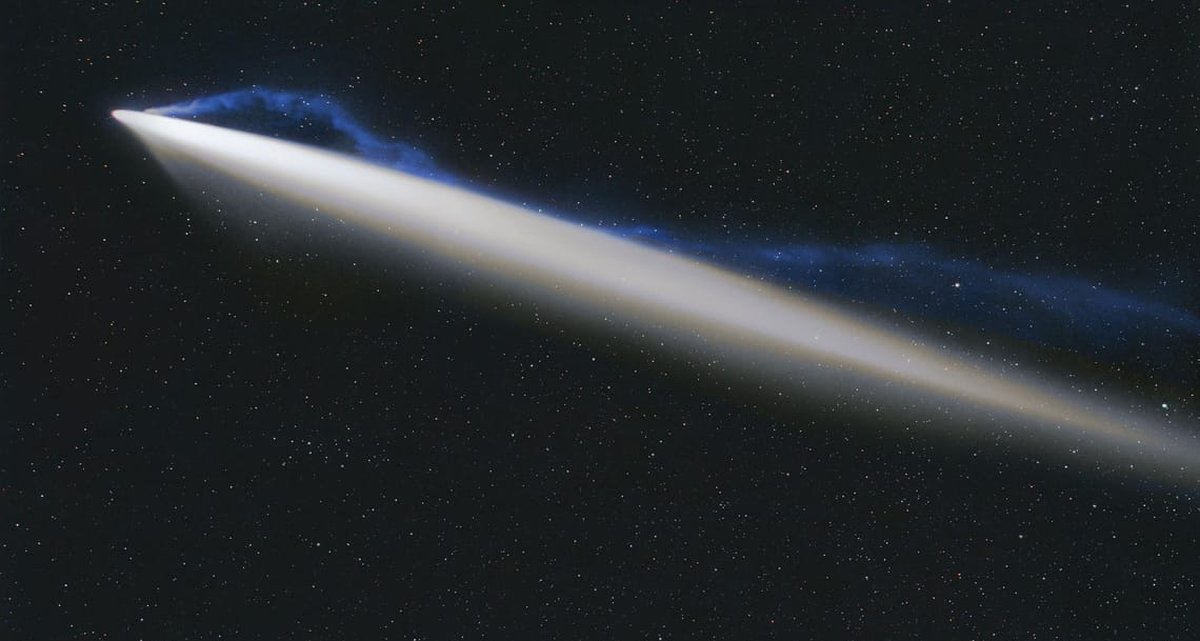It had everything to make for a special Halloween for amateur astronomers, astrophotographers, and sky fans in general. The so-called “Great Comet of Halloween”The light detected on the night of September 27 could become as bright as the planet Venus, providing a light show on a night already marked by fun, tradition, fantasy and ghostly apparitions.
The expectation was not unfounded. Cataloged as C/2024 S1 ATLAS by the Asteroid Terrestrial Latest Alert System (ATLAS) tracking project, this incoming comet was incredibly bright and active for its proximity to the Sun at the time of its discovery. It was the promise of an unusual spectacle among the surrounding comets.
Unfortunately, it occurred on its closest day to the Sun (perihelion), on Monday (28). S1 ATLAS completely “engulfed” by solar radiation. In a few minutes, its materials turned into plasma, its nucleus completely dissolved, that is, the comet evaporated in the hellish atmosphere of our star.
How does a “sungrazer” comet die?
Halloween Comet, considered a “sungrazer” comet, an English term meaning literally “grazing the Sun”, passed by Earth and headed towards the Sun on October 24. When it reached perihelion it was only 1.2 million kilometers away. The lethal combination of gravitational forces and overheating caused him to instantly vaporize.
At the time of the evaporation, which occurred at 8:30 a.m. (Brasília time) on the 28th, S1 ATLAS was in a dangerous position 532 thousand kilometers from the sun’s surface. Astronomers estimate that this comet’s orbital period may be 953 yearsThis suggests that this is not the first time it has passed through our inner solar system.
The comet’s passage was monitored by LASCO C3, a coronagraph on the SOHO probe, a collaboration between NASA and ESA positioned at the Lagrange 2 point to observe the Sun. The device was the first to detect signals. The comet was weakening even before entering perihelion.
Sungrazer comets: Flying dangerously close to the Sun
Usually very small Sungrazer comets have been observed for hundreds of years and are characterized by their orbits dangerously close to the Sun.. This gives them an apotheotic property: they glow intensely, but usually break up into smaller fragments unless they suddenly evaporate.
These were detected between the 1880s and 1890s by German astronomer Heinrich Kreutz, who noticed that very bright comets had similar orbits.S.. Although he didn’t have the technology to observe most of it breaking apart, Kreutz deduced it through mathematical calculations.
In addition to distinguishing Sungrazers from other comets, Kreutz theorized that these comets were probably fragments of a single original comet. His theory is that this mega-comet and its fragments broke apart several times as it orbited the Sun over a period of approximately 800 years. This crowded group of comets was called “Kreutz grazing comets.”
How are sungrazers observed today?

Observation of the “family” has been improved to the extreme by the use of modern coronagraphs such as the LASCO C3. This kind of device Designed to block intense sunlightIt allows observation not only of the solar corona but also of all objects close to our star, such as comets.
Since its first operation on December 30, 1995, LASCO has revolutionized comet science by discovering thousands of new comets, most of which belong to the sungrazer group. Observations have shown that Kreutz comets come ten times closer to the Sun than any other group.
As far as we know, To date, no comet has reached the solar surface or even the photosphere.. If they had achieved this feat, they would have been called “sun bangers”, which has not yet happened.
Did you like the content? So always stay up to date with astronomical news like this on TecMundo and take the opportunity to understand why the ‘Oumuamua space object could be a window to other solar systems. Until later!
Source: Tec Mundo
I’m Blaine Morgan, an experienced journalist and writer with over 8 years of experience in the tech industry. My expertise lies in writing about technology news and trends, covering everything from cutting-edge gadgets to emerging software developments. I’ve written for several leading publications including Gadget Onus where I am an author.













